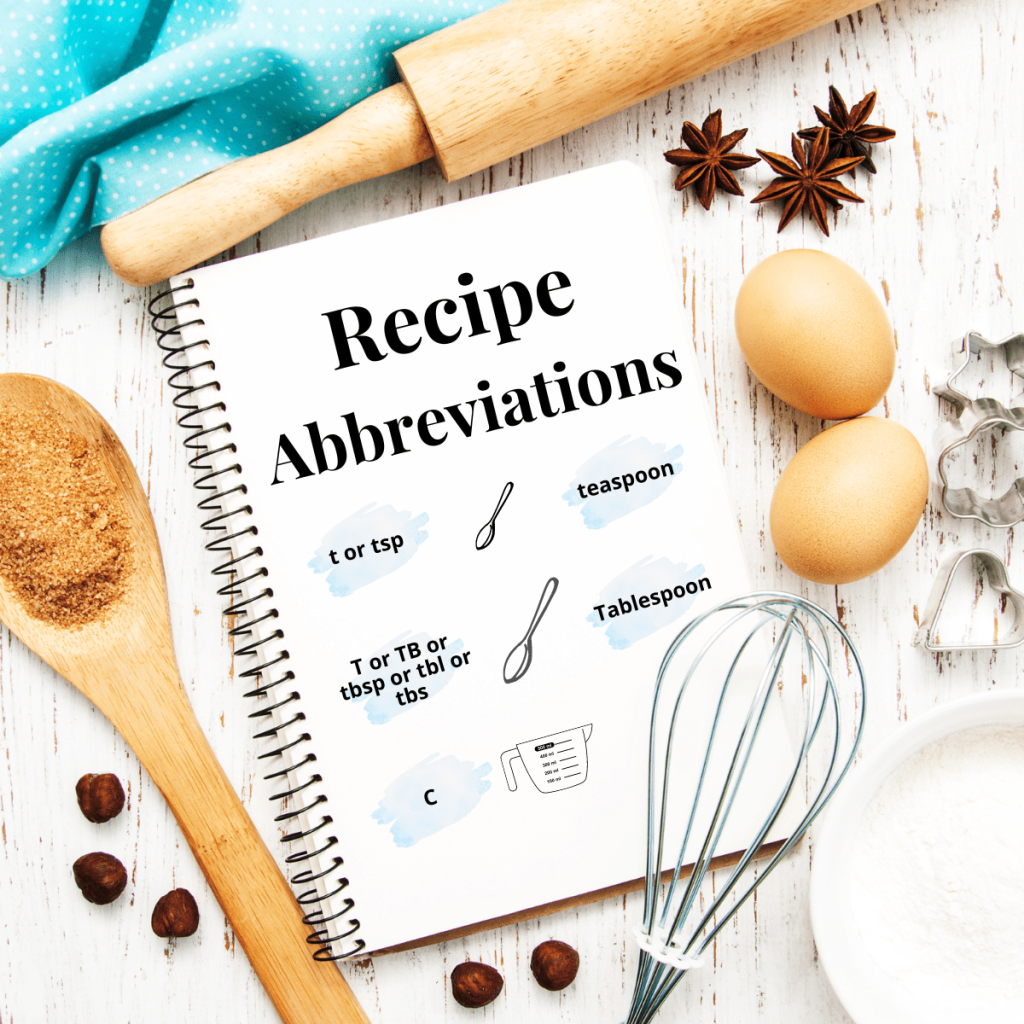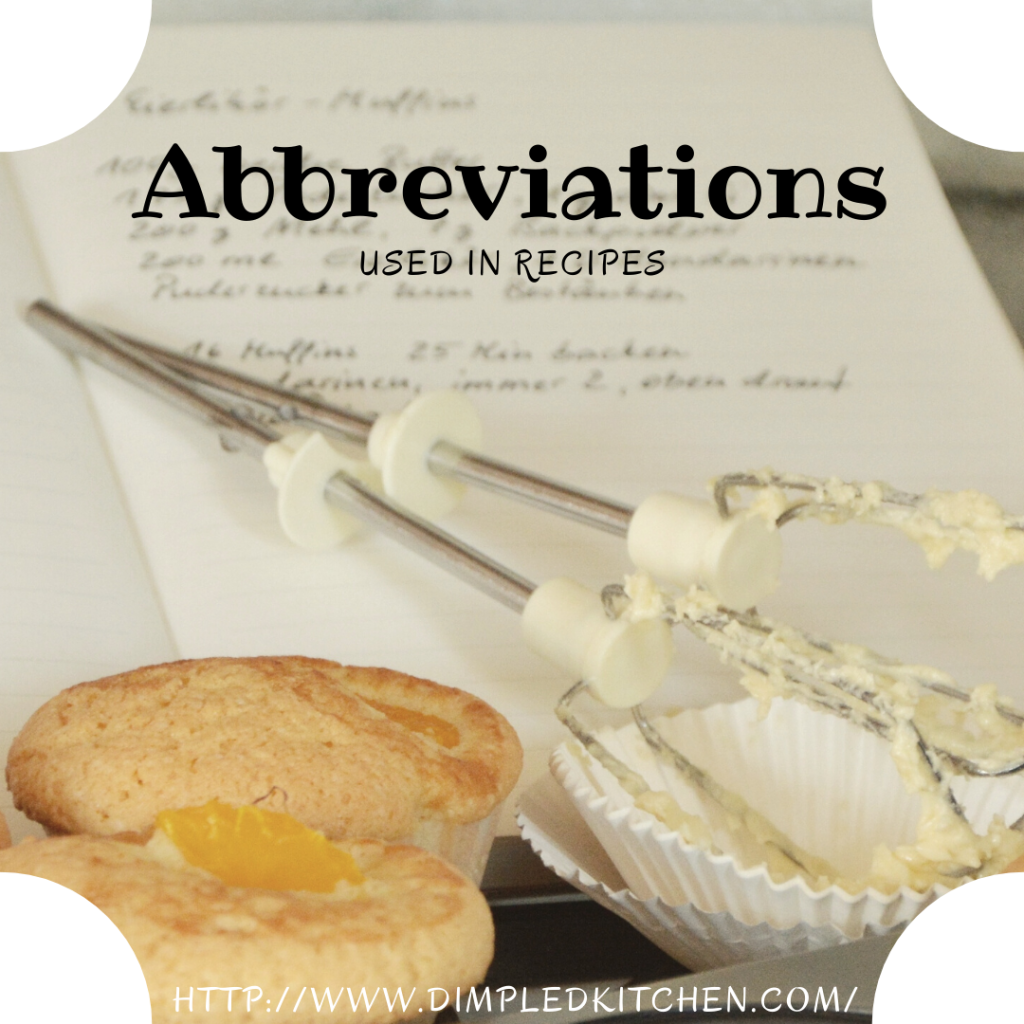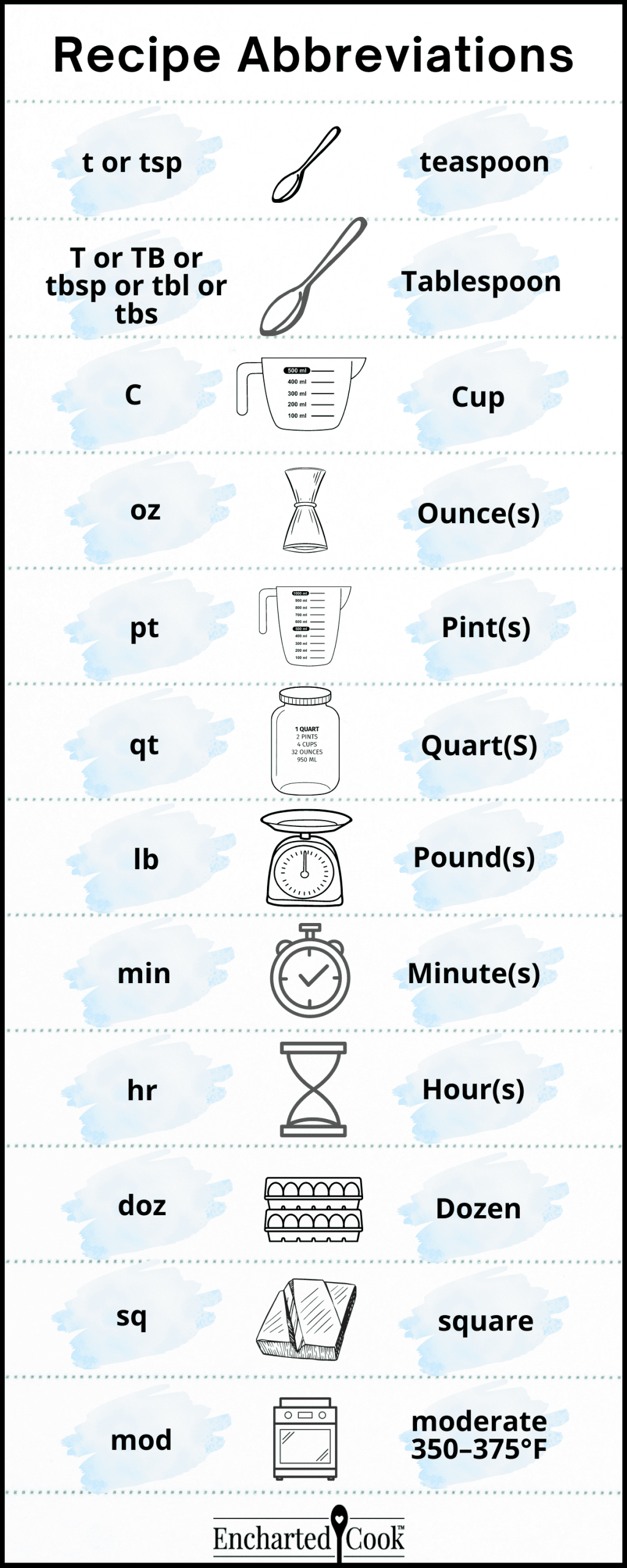Simplify Cooking With Our Recipe Abbreviations: Discover Time-Saving Techniques Now!
Recipe Abbreviations: A Time-Saving Guide for Cooking Enthusiasts
Introduction
Welcome, Cooking Enthusiasts! Today, we have an essential topic to discuss that will revolutionize the way you read recipes. We all know that recipes can sometimes be overwhelming, especially when we encounter abbreviations that leave us scratching our heads. Fear not! In this article, we will delve into the world of recipe abbreviations, uncovering their meanings, and equipping you with the knowledge to navigate any recipe with ease. So, let’s dive in!
3 Picture Gallery: Simplify Cooking With Our Recipe Abbreviations: Discover Time-Saving Techniques Now!



What are Recipe Abbreviations? 📜
Recipe abbreviations are shorthand notations used in cooking instructions to save space and simplify recipes. These abbreviations are commonly found in cookbooks, online recipe sources, and even handwritten recipe cards. They are designed to make recipes more concise and easier to follow, ensuring that you can whip up delicious meals without any confusion.
Common Recipe Abbreviations

Image Source: enchartedcook.com
Before we begin exploring the world of recipe abbreviations, let’s take a look at some of the most common abbreviations you are likely to encounter:
1. tsp: Teaspoon

Image Source: dimpledkitchen.com
2. tbsp: Tablespoon
3. oz: Ounce

Image Source: enchartedcook.com
4. lb: Pound
5. min: Minute
6. hr: Hour
7. °F: Fahrenheit
Why are Recipe Abbreviations Used? ❓
Recipe abbreviations serve several purposes:
1. Concision: By condensing words into abbreviations, recipes become more concise and easier to read.
2. Clarity: Abbreviations help maintain consistency and uniformity in recipes, allowing for better understanding.
3. Internationalization: Recipe abbreviations are particularly useful for international readers, as they provide a universal language of measurements and ingredients.
4. Space-Saving: Abbreviations save valuable space in cookbooks, recipe cards, and online platforms, making it possible to fit more information on a single page.
Now that we understand the importance of recipe abbreviations, let’s delve deeper into their usage.
Ingredients and Recipe Abbreviations
When it comes to ingredients, recipe abbreviations primarily revolve around measurements. Here are three commonly used abbreviations:
1. tsp: Teaspoon
The abbreviation tsp stands for teaspoon, a unit of measurement used to quantify small amounts of ingredients such as spices, baking powder, or vanilla extract. A teaspoon is equal to approximately 5 milliliters.
2. tbsp: Tablespoon
The abbreviation tbsp represents tablespoon, a larger measurement used for ingredients like oils, sauces, or condiments. One tablespoon is equal to around 15 milliliters.
3. oz: Ounce
The abbreviation oz refers to an ounce, which is used to measure both liquid and solid ingredients. Ounces are often used for items such as meat, cheese, or liquids like milk or water.
Instructions and Recipe Abbreviations
Recipe abbreviations are not limited to ingredients; they are also prevalent in cooking instructions. Here are three commonly used abbreviations:
1. min: Minute
The abbreviation min stands for minute, indicating the duration of a specific cooking step. For example, Simmer for 10 min means to let the dish cook at a low heat for ten minutes.
2. hr: Hour
The abbreviation hr represents hour, typically used for slow-cooked dishes or recipes that require longer cooking times. For instance, Bake for 1 hr indicates that the dish should be baked for one hour.
3. °F: Fahrenheit
The symbol °F denotes the Fahrenheit scale, a unit of measurement for temperature. Many recipes include specific cooking temperatures represented in degrees Fahrenheit, such as Preheat the oven to 350°F.
Serving Suggestions and Recipe Abbreviations
Recipe abbreviations can even be found in the serving suggestions section of a recipe. Here are three commonly used abbreviations:
1. pcs: Pieces
The abbreviation pcs refers to pieces and is often used when serving items like appetizers, finger foods, or desserts. For example, Serve the cookies on a plate, 12 pcs per serving.
2. oz: Ounce
When it comes to serving beverages, the abbreviation oz is frequently used to denote fluid ounces. It is used to specify the amount of liquid to pour into each glass or cup, such as Pour 8 oz of orange juice into each glass.
3. serv: Serving
The abbreviation serv represents serving and is commonly used in recipes to indicate the number of individual portions a dish will yield. For instance, This recipe makes 4 serv means that the recipe will serve four people.
Techniques and Tips for Using Recipe Abbreviations
Now that you are familiar with various recipe abbreviations, let’s dive into some techniques and tips to make the most out of them:
1. Familiarize Yourself
Take time to familiarize yourself with common recipe abbreviations. Having a basic understanding of these abbreviations will make reading and following recipes a breeze.
2. Read the Full Recipe
Before you start cooking, read the entire recipe from start to finish. This will give you an overview of all the ingredients and measurements, allowing you to identify any abbreviations used in the recipe.
3. Consult a Conversion Chart
If you come across an abbreviation you are unfamiliar with, don’t hesitate to consult a conversion chart. There are numerous online resources available that can help you quickly decipher the meaning.
4. Double-Check Measurements
When using abbreviations representing measurements, double-check that you are using the correct amount. Misinterpreting an abbreviation could lead to imbalanced flavors or cooking mishaps.
5. Ask for Clarification
If you are unsure about an abbreviation or have any doubts, reach out to the recipe author or a knowledgeable friend who can provide clarification. It’s better to ask and ensure accuracy than to make assumptions.
Frequently Asked Questions (FAQs)
1. What is the difference between tsp and tbsp?
The abbreviation tsp stands for teaspoon, which is a smaller measurement compared to tablespoon represented by the abbreviation tbsp. Teaspoons are typically used for small amounts of ingredients, while tablespoons are used for larger quantities.
2. How can I convert Fahrenheit to Celsius?
To convert Fahrenheit to Celsius, subtract 32 from the Fahrenheit temperature, then multiply the result by 5/9. For example, to convert 350°F to Celsius: (350 – 32) × 5/9 = 176.67°C.
3. Can I substitute fresh ingredients for their dried counterparts?
Yes, you can substitute fresh ingredients with dried ones, but it’s important to note that the flavor intensity may differ. Generally, you’ll need less of a dried ingredient compared to its fresh equivalent.
4. What does min stand for in cooking instructions?
The abbreviation min stands for minute and is used to indicate the duration of a specific cooking step. It’s important to follow the recommended cooking times to ensure your dish is cooked to perfection.
5. Do I need to preheat the oven if a recipe doesn’t specify?
It’s generally a good practice to preheat the oven unless the recipe explicitly states otherwise. Preheating ensures that the oven reaches the desired temperature before you begin baking or roasting your dish.
Conclusion
Congratulations, Cooking Enthusiasts! You are now equipped with the knowledge of recipe abbreviations, allowing you to confidently tackle any recipe that comes your way. From deciphering ingredient measurements to understanding cooking instructions and serving suggestions, recipe abbreviations are a valuable tool in the culinary world. So, the next time you dive into a recipe, embrace the abbreviations and let them guide you towards culinary success!
Remember, practice makes perfect, and soon you’ll be effortlessly deciphering any recipe, abbreviations and all. Happy cooking!
Final Remarks
Disclaimer: The information provided in this article is for educational and informational purposes only. Always refer to the specific recipe you are using for accurate measurements and instructions. The author and website are not responsible for any adverse effects or culinary mishaps resulting from the use of recipe abbreviations.
This post topic: Recipe


